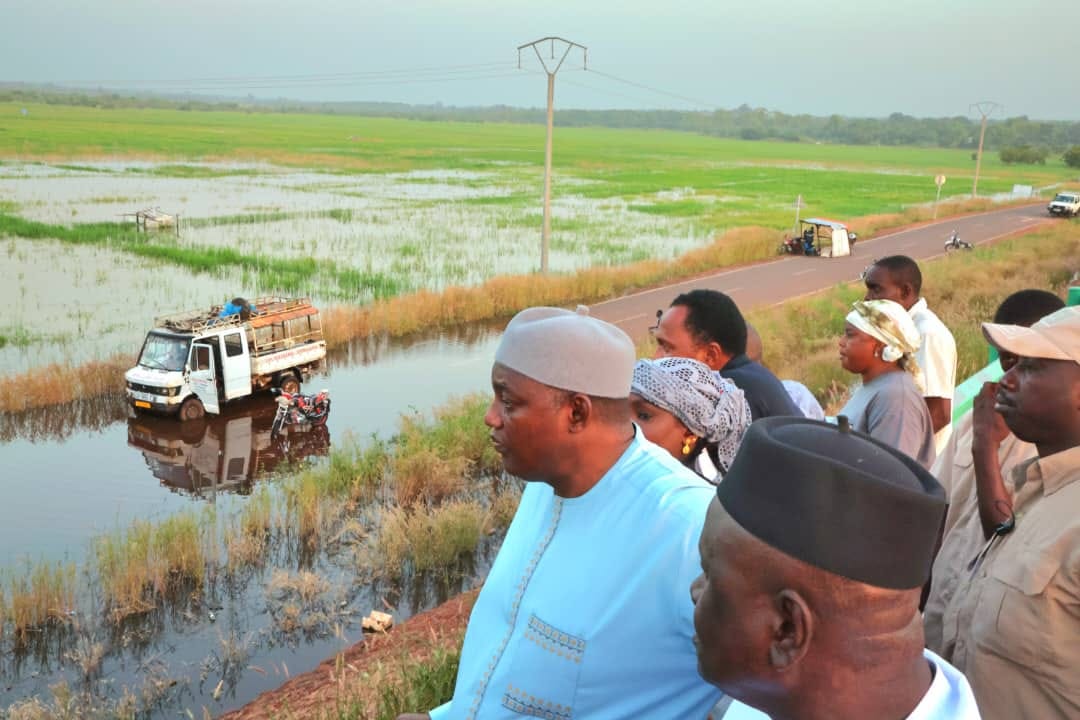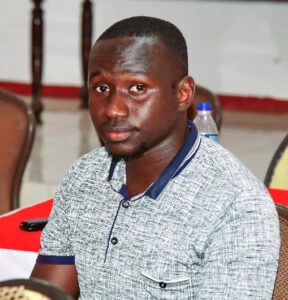
The present floods in Basse in the Upper River Region (URR)- a distance between Banjul and Basse Santa Su · 326 km have had a profound negative impact on the community, particularly affecting women, youth, returnee migrants in the farming sector, entrepreneurs including GYIN Gambia beneficiaries. The extreme weather events have not only disrupted daily lives but also threatened the livelihoods and future prospects of many.
Farmers in the regions have seen their crops and fields inundated, leading to potential food shortages and financial losses. This is especially challenging for those who rely on agriculture as their primary source of income.
Entrepreneurs and small business owners have also been hit hard. The flooding has damaged shops and stalls, disrupted supply chains, and reduced customer footfall, making it difficult for businesses to recover and thrive. This is particularly concerning for the economic stability of the area, which is known for its vibrant market activities.
Youth and Women, who are often at the forefront of entrepreneurial activities in Basse, face additional hurdles. Many of these individuals have invested their savings and efforts into small businesses and agricultural ventures, only to see their hard work washed away by the floods.
Recently, the Gambian Leader, President Adama Barrow have visited the affected areas and had underscored the urgent need for comprehensive and sustainable solutions to prevent future flooding. He pledged government’s support for those affected communities, saying: “We are committed to providing assistance and ensuring that our citizens receive the help they need during this difficult time.” Sourced from Gabiana.
Speaking to a climate change expert based in the United State of America, Mr Omar Malmo Sambou, Co-founder and Director of Research and Consultancy at Green-Up Gambia explained that climate change takes several decades to be experienced and the changes in the climatic phenomenon over a long period of time is very obvious in the Gambia
He added that the overflow of the River Gambia explained the impacts of climate change on low lying countries like the Gambia as research has suggested that the capital – Banjul, might be under water in several years to come.

He continued: “Floods in Barcelona, Valencia and other parts of the world just showed a prove that climate change is a global phenomenon and isn’t unique to any nation or ecosystem. In short, the floods are as a result of high precipitation and rapid melting rate of the glacier leading to higher water volumes in some water ecologies. As well, the bridge can be an obstacle to the free flow of water therefore finds its level in the communities. So, the causes can hypothetically be natural and/or human induced.”
As global warming intensifies, Mr Sambou dilated that the targets to reduce emissions to the levels of the 1990s is failing, noting that it is evident that there will be more glacier melting, extreme weather events culminating into disasters and loss of small islands, and all of these are predicted by several IPCC reports.
“Floods in the Gambia are not often due to overflow of the river, it’s a new phenomenon in the country I guess which can be a possible effect from the bridge. Most floods in the Gambia are due to poor infrastructural development. In the face of climate change, infrastructural development that doesn’t factor in the climate realities of the world is a recipe for disaster. The Gambia will continue to face challenges of flood hazards due to poor drainage systems, uncontrolled tiling of houses to create sealed surfaces everywhere, development on water ways and the low-lying settlements natures,” the climate change expert predicted.
In any disastrous situation, he went on, everyone has to make sure all are safe, saying that in the recovery face, it’s important to do a thorough assessment of the causes and impact as it will inform the action points.
“As an expert in the sector, I can tell that we need to educate our people on the importance of natural environments and discourage infrastructures on water ways, avoid creating sealed surfaces everywhere and settling on low lying areas. People must consider climate change in their infrastructural development as well as build their natural resilience through forest buffers and green spaces,” Mr Sambou advised the masses.
Sulayman Sumareh Janneh, the deputy managing director of the National Roads Authority (NRA) while speaking with the The Point Newspaper explained, “Basse flooding is not something that could be easily tackled at this juncture given the fact that it’s not a water running issue that is coming just from the area. However, this is water that is virtually emanating from somewhere else. In this case, we are suspecting that it is coming from Futa-Jallon end.”
In a short chat with GYIN Gambia Communication team, Omar Camara, a Fashion Designer and one-time mentor for GYIN Gambia’s Standing4Youth Initiative program, shared his struggle as his workplace by the riverside has also been affected. According to him, the incident has now forced him to relocate due to unforeseen circumstances as the flooding caused significant losses in his workshop, with materials soaked in the water. As a result, he lamented, his work is on hold, and customers are anxiously asking for their materials back.
“The floods were devastating, but they also taught us the importance of resilience and sustainability,” says Binta Jallow, a local farmer. “By planting flood-tolerant crops, we’re not just recovering from this disaster-we’re preparing for the future. It’s about ensuring that our community can thrive despite the challenges posed by climate change.”
In an interview with Mr. Bubacarr Sidibeh, Chairperson, Regional Youth Committe of Upper River Region (URR) highlighted the severe struggles faced by the community due to river flooding. He stated that the incident could be caused by the underground waters from Futa-Jallon.

The flooding, according to Chairman Sidibeh, has mainly affected Kabakama village and Kobakunda Layout, leading to the evacuation of residents and the closure of over 100 businesses.
On movement of goods and services, he said it has greatly affected and restricted movements due to water-blocked roads, destruction of rice fields, and the impact on the MRC headquarters have further exacerbated the situation.
Mr Sidibeh stated that women gardeners from Dampha Kunda, who supply vegetables, are facing significant obstacles saying that many people are now seeking accommodations.
Sidibeh concluded by appealing for immediate support from the government, donors and individuals to help the affected communities.
Editor’s Note: Freedom House funded this story, through its Promoting Rights and Justice Activity in The Gambia.
Written by: Ms. Jainaba Njie, Program Officer at GYIN Gambia Chapter
